#Janata Party
Quote
The Congress’ political hara-kiri in Karnataka also gave the BJP and Hindutva opportunities to multiply their influence. In 1989, the Lingayat leader Veerendra Patil was unceremoniously removed as chief minister by the Congress under Prime Minister Rajiv Gandhi. The drifting away of Lingayat community from the party was complete. The BJP also gained from the splitting up of the Janata Dal in 1999. The JD (Secular), under H.D. Deve Gowda, identified with the Vokkaliga community, which had historical animosity and political competition with the Lingayats. The JDS was not an option for the Lingayats. This opportunity was seized on by the BJP, which crowned the Lingayat leader B.S. Yediyurappa as their party chief. The RSS also started working with several Lingayat seers on the agenda of Hindu unity. These developments further consolidated the Lingayat support to the BJP. By the 2004 elections, the Lingayat base of the erstwhile Janata Party was usurped by the BJP.
Shivasundar, ‘The Long March of Hindutva in Karnataka’, India Forum
#India Forum#Shivasundar#India#Karnataka#INC#BJP#Hindutva#Veerendra Patil#Rajiv Gandhi#Lingayats#Janata Dal#JD (Secular)#Vokkaligas#BS Yediyurappa#RSS#Janata Party
2 notes
·
View notes
Text
Jammu Parliamentary Constituency: Delimitation Will Impact The Outcome
“Even as the territorial contours of the new constituency exclude the Pir Panjal, historical patterns are instructive.”
Latief U Zaman Dev*
Before March 14, 2022, the Jammu Parliamentary Constituency (JPC) comprised Jammu, Samba, Poonch and Rajouri Districts.
Since its creation in 1962, eight winners were from Dogra community. A Gujjar from Rajouri enjoyed a truncated term from 2002 to 2004 after…

View On WordPress
#Bakerwal#BJP#Changed Boundary#Congress#Development#Dogra#Gujjar#INC#Jammu#Jammu Parliamentary Constituency#Jan Sangh#Janata Party#Kashmiri#Migrant Voters#National Conference#NC#Pahari#Pir Panjal#Polarisation#Poonch#Rajouri#Reasi#Samba
0 notes
Text
Anti-Muslim Hate Speech on the Rise in India, According to Research Group
India has witnessed a disturbing surge in anti-Muslim hate speech, with a 62% increase during the second half of 2023 compared to the first six months of the year. This concerning trend was highlighted by the India Hate Lab, a Washington-based research group. The Israel-Gaza war played a significant role in exacerbating hate speech during the last three months of the year.
Key…
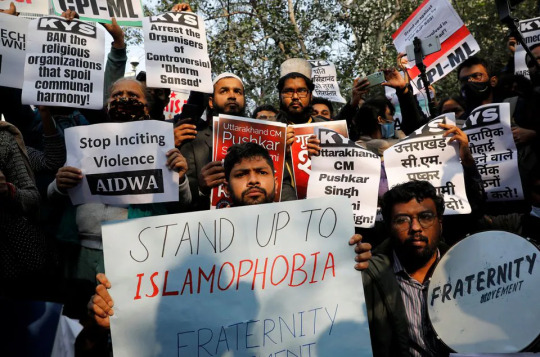
View On WordPress
0 notes
Text
जनता पार्टी के केंद्रीय चुनाव प्राधिकरण के निरीक्षण में अनुसूचित पार्टी अध्यक्ष और राष्ट्रीय कार्यकारी परिषद के चुनाव संपन्न
जनता पार्टी के केंद्रीय चुनाव प्राधिकरण के निरीक्षण में अनुसूचित पार्टी अध्यक्ष और राष्ट्रीय कार्यकारी परिषद के चुनाव संपन्न
नई दिल्ली ,10 नवंबर।ऐतिहासिक और क्रांतिकारी राजनीतिक पार्टी “जनता पार्टी” अपने अवतरण के बाद देश के विभिन्न राज्यों में सक्रिय रूप से बढ़ रही है। सर्वविदित है कि इस पार्टी का शंखनाद लोकनायक श्री जयप्रकाश नारायण जीके आह्वान पर हुआ था इस ऐतिहासिक राजनीतिक पार्टी का पुनर्गठन कार्य संपन्न हुआ है।
7 नवंबर 2022 को जनता पार्टी के केंद्रीय चुनाव प्राधिकरण के निरीक्षण में अनुसूचित पार्टी अध्यक्ष और…
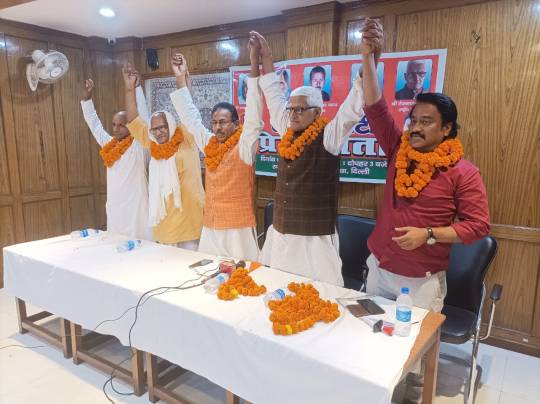
View On WordPress
0 notes
Text
definitely a longer piece so these excerpts are far from showcasing everything this piece has to offer! read the whole thing on your own time, and in general, just check out jewish currents, an educational, leftist, anti-zionist jewish magazine!
Every August, the township of Edison, New Jersey—where one in five residents is of Indian origin—holds a parade to celebrate India’s Independence Day. In 2022, a long line of floats rolled through the streets, decked out in images of Hindu deities and colorful advertisements for local businesses. People cheered from the sidelines or joined the cavalcade, dancing to pulsing Bollywood music. In the middle of the procession came another kind of vehicle: A wheel loader, which looks like a small bulldozer, rumbled along the route bearing an image of Indian Prime Minister Narendra Modi aloft in its bucket.
For South Asian Muslims, the meaning of the addition was hard to miss. A few months earlier, during the month of Ramadan, Indian government officials had sent bulldozers into Delhi’s Muslim neighborhoods, where they damaged a mosque and leveled homes and storefronts. The Washington Post called the bulldozer “a polarizing symbol of state power under Narendra Modi,” whose ruling Bharatiya Janata Party (BJP) is increasingly enacting a program of Hindu supremacy and Muslim subjugation. In the weeks after the parade, one Muslim resident of Edison, who is of Indian origin, told The New York Times that he understood the bulldozer much as Jews would a swastika or Black Americans would a Klansman’s hood. Its inclusion underscored the parade’s other nods to the ideology known as Hindutva, which seeks to transform India into an ethnonationalist Hindu state. The event’s grand marshal was the BJP’s national spokesperson, Sambit Patra, who flew in from India. Other invitees were affiliated with the Hindu Swayamsevak Sangh (HSS), the international arm of the Hindu nationalist paramilitary force Rashtriya Swayamsevak Sangh (RSS), of which Modi is a longtime member.
...
On December 6th, 1992, a mob of 150,000 Hindus, many of whom were affiliated with the paramilitary group the RSS, gathered at the Babri Masjid, a centuries-old mosque that is one of the most contested sacred sites in the world. Over the preceding century, far-right Hindus had claimed that the mosque, located in the North Indian city of Ayodhya, was built not only upon the site where the Hindu deity Ram was born but atop the foundations of a demolished Hindu temple. The RSS and its affiliates had been campaigning to, in the words of a BJP minister, correct the “historical mistake” of the mosque’s existence, a task the mob completed that December afternoon. “They climbed on top of the domes and tombs,” one witness told NPR. “They were carrying hammers and these three-pronged spears from Hindu scripture. They started hacking at the mosque. By night, it was destroyed.” The demolition sparked riots that lasted months and killed an estimated 2,000 people across the country.
The destruction of the Babri Masjid was arguably Hindu nationalism’s greatest triumph to date. Since its establishment in 1925, the RSS—whose founders sought what one of them called a “military regeneration of the Hindus,” inspired by Mussolini’s Black Shirts and Nazi “race pride”—had been a marginal presence in India: Its members held no elected office, and it was temporarily designated a terrorist organization after one of its affiliates shot and killed Mohandas Gandhi in 1948. But the leveling of the Babri Masjid activated a virulently ethnonationalist base and paved the way for three decades of Hindutva ascendance. In 1998, the BJP formed a government for the first time; in 2014, it returned to power, winning a staggering 282 out of 543 seats in parliament and propelling Modi into India’s highest office. Since then, journalist Samanth Subramanian notes, all of the country’s governmental and civil society institutions “have been pressured to fall in line” with a Hindutva agenda—a phenomenon on full display in 2019, when the Supreme Court of India awarded the land where the Babri Masjid once stood to a government run by the very Hindu nationalists who illegally destroyed it. (Modi has since laid a foundation stone for a new Ram temple in Ayodhya, an event that a prominent RSS activist celebrated with a billboard in Times Square.) The Ayodhya verdict came in the same year that Modi stripped constitutional protections from residents of the Muslim-majority region of Kashmir and passed a law that creates a fast track to citizenship for non-Muslim immigrants, laying the groundwork for a religious test for Indian nationality. Under Modi, “the Hinduization of India is almost complete,” as journalist Yasmeen Serhan has written in The Atlantic.
To achieve its goals, the RSS has worked via a dense network of organizations that call themselves the “Sangh Parivar” (“joint family”) of Hindu nationalism. The BJP, which holds more seats in the Indian parliament than every other party combined, is the Sangh’s electoral face. The Vishwa Hindu Parishad (VHP) is the movement’s cultural wing, responsible for “Hinduizing” Indian society at the grassroots level. The Bajrang Dal is the project’s militant arm, which enforces Hindu supremacy through violence. Dozens of other organizations contribute money and platforms to the Sangh. The sheer number of groups affords the Sangh what human rights activist Pranay Somayajula has referred to as a “tactical politics of plausible deniability,” in which the many degrees of separation between the governing elements and their vigilante partners shields the former from backlash. This explains how, until 2018, the CIA could describe the VHP and Bajrang Dal as “militant religious organizations”—a designation that applies to non-electoral groups exerting political pressure—even as successive US governments have maintained a warm relationship with their parliamentary counterpart, the BJP.
...
The most extreme figures in the Hindu nationalist and Zionist movements were especially frank about the nature of their partnership: “Whether you call them Palestinians, Afghans, or Pakistanis, the root of the problem for Hindus and Jews is Islam,” Bajrang Dal affiliate Rohit Vyasmaan told The New York Times of his friendly relationship with Mike Guzofsky, a member of a violent militant group connected to the infamous Jewish supremacist Meir Kahane’s Kach Party.
...
In 2003, Gary Ackerman—a Jewish former congressman who was awarded India’s third-highest civilian honor for helping to found the Congressional Caucus on India—told a gathering of AJC and AIPAC representatives and their Indian counterparts that “Israel [is] surrounded by 120 million Muslims,” while “India has 120 million [within].” Tom Lantos, another Jewish member of the caucus, likewise enjoined the two communities to collaborate: “We are drawn together by mindless, vicious, fanatic, Islamic terrorism.”
#reaux speaks#hindutva#nationalism#islam#religion#india#narendra modi#south asia#muslim#new jersey#Bharatiya Janata Party#history#resources#jewish currents#anti zionism#palestine#islamophobia#afghanistan#hindu#jewish#free palestine#israel
160 notes
·
View notes
Text
Chalo where are my political science wale students
We gotta cry together
#accounts walo ka ho gaya ab#now it's our chance to cry#MERE SE NAHI HOGA YE EXAM JAGSDVJGSDC#wtf is the indian politics wali book#i made a rought election timeline and everything#BUT I CAN'T REMEMBER SHIT#when did grand alliance happen?? when did janata party happen??! when did XYZ happen?!! IDFK#cbse#mein marr rahi hoon
6 notes
·
View notes
Text
Dushyant Chautala formed JJP in 2018 became DY CM next year how BJP move push him on back foot in Haryana Politics
read on app
Dushyant Chautala Mistake: Changes are taking place every moment in the politics of Haryana. While the ruling BJP seems to be confident about its government, the main opposition Congress now seems to be getting the support of former Deputy Chief Minister Dushyant Chautala’s Jannayak Janata Party (JJP). But the twist in this is that now JJP itself has reached the verge of disunity.…
View On WordPress
#BJP#Chautala#closeness between Congress and JJP#Dushyant#dushyant chautala#foot#formed..#Haryana#Hindi News#Hindustan#Jannayak Janata Party#JJP#Manohar Lal Khattar#move#Nayab Singh Saini government#News in Hindi#Politics#push#year
0 notes
Text
INDIA WOUNDED: A BIRD’S EYE VIEW
Compiled By Debaprasad Bandyopadhyay
Posted on 12/02/2021
Updated on 01/11/2023 (GMT 15:45 hrs)
“If thou cannot save me, why unfurl such deafening arrangements then?”
Do you know what is Matsya Nyaya? The Sanskrit word Matsya Nyaya (Sanskrit: मत्स्यन्याय; mātsyanyāya) refers to the principle of the Law of Fish. It is the fundamental law of nature in which the big fish devours the smaller…
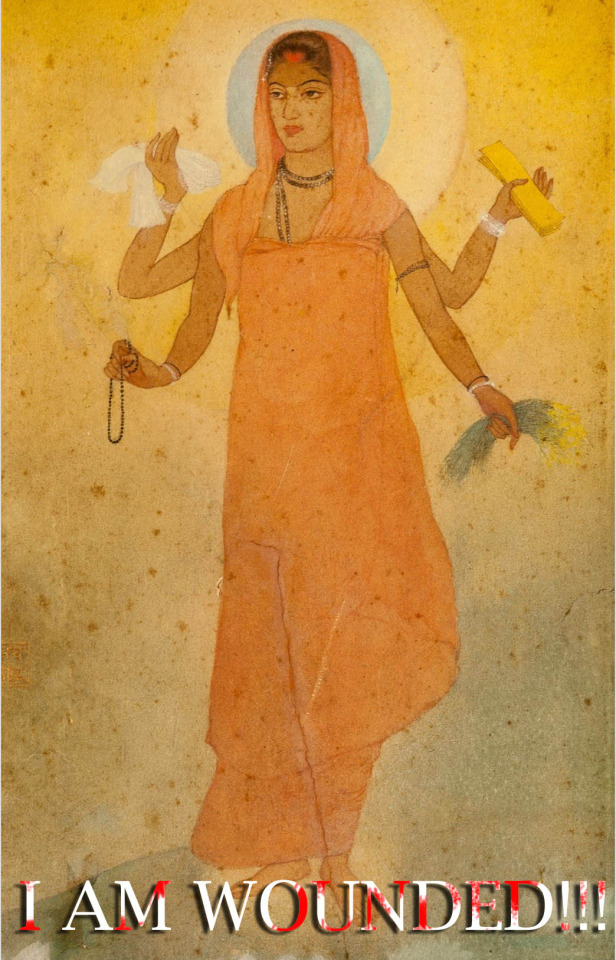
View On WordPress
#Bharatiya Janata Party#BJP#Climate Change#Crippled Creativity#Crony Capitalism#Happiness Index#India Malnutrition#India Suicide#India: corruption#India: External Debt#India:Pollution#Indian Autocracy#Indian Economy#Indian Politics#Indian Polity#Indian poverty#Market Fundamentalism#Monopoly Capitalism#Religious Fundamentalism#Simulation
0 notes
Text
BJP’s ‘divisive agenda’ equally harmful for Hindus and Muslims: Mehbooba Mufti
SRINAGAR — The President of the Peoples Democratic Party (PDP), Mehbooba Mufti, has claimed that in pursuit of their agenda against one community, the BJP is destroying the social fabric of the majority Hindu community, “radicalising and criminalising the youth for their lust for power”, according to a PDP statement issued on Tuesday.
Speaking to the media while campaigning for the Lok Sabha…

View On WordPress
#Bharatiya Janata Party (BJP)#Jammu and Kashmir (J&K)#Kashmir#Lok Sabha Election#Mehbooba Mufti#People&039;s Democratic Party (PDP)#Politics
0 notes
Text
#India elections#monumental India elections#Narendra Modi#third term#India’s political landscape#opposition alliance#BJP winning run#Vivek Mishra#India’s general elections#April 19#968 million eligible voters#largest democratic vote#logistical challenges#robust electoral mechanism#Lok Sabha#Bharatiya Janata Party#Indian National Congress#President of India#Anglo-Indians#Rahul Gandhi#Sonia Gandhi#Nehru-Gandhi political dynasty#electronic voting machines#voter turnout#polling stations#election expenditure#public opinion polls#uniform civil code#minority groups#exit polls
0 notes
Text
Building a Prosperous Bharat: BJP's Pledge for Economic Growth
In a bold assertion of vision and commitment, the Bharatiya Janata Party (BJP) has unveiled its manifesto 'Modi ki Guarantee 2024', promising to propel India into the global economic elite by securing its position as the third largest economy in the world. With an unwavering focus on sustainable growth and inclusive development, the BJP aims to revolutionize India's economic landscape through a series of innovative reforms and strategic investments.
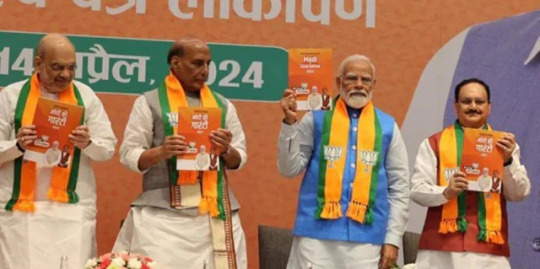
At the heart of the BJP's economic agenda lies a steadfast dedication to infrastructure development as a catalyst for employment generation. Recognizing the pivotal role played by infrastructure in driving economic progress, the party pledges to continue its unprecedented investment in this sector, creating a plethora of job opportunities across the nation. Moreover, special emphasis will be placed on bolstering employment prospects in key sectors such as manufacturing and tourism, unleashing the full potential of Bharat's burgeoning workforce.
Central to the BJP's manifesto is the promise of ushering in a "next generation of reforms" aimed at positioning India as a global economic powerhouse. Through a judicious mix of policy interventions and strategic initiatives, the party envisions a future where India not only achieves but surpasses its current economic standing, emerging as a beacon of prosperity and opportunity on the world stage.
The BJP's commitment to fostering economic growth is underscored by its comprehensive approach to infrastructure development. From modernizing road networks to enhancing rail and metro connectivity, from establishing state-of-the-art EV charging stations to constructing new airports, the party leaves no stone unturned in its quest to build a robust infrastructure framework that fuels economic expansion and facilitates seamless connectivity across the nation.
In tandem with its infrastructure thrust, the BJP lays significant emphasis on bolstering the manufacturing sector, recognizing it as a key driver of economic growth and employment generation. Through initiatives such as the Production Linked Incentive (PLI) scheme and Make in India, the party aims to transform India into a global manufacturing hub, streamlining regulatory processes, attracting investments, and fostering innovation and research in key sectors such as defence, automobile, and semiconductor manufacturing.
A cornerstone of the BJP's economic vision is its unwavering support for startups and entrepreneurship. By expanding the startup ecosystem to tier-2 and tier-3 cities, enhancing access to funding through schemes like the Startup India Seed Fund, and fostering a culture of innovation through initiatives such as Atal Tinkering Labs, the party seeks to unleash the entrepreneurial spirit of the nation, driving job creation and fostering economic dynamism.
In a bid to empower small businesses and entrepreneurs, the BJP pledges to double the loan limit under the PM Mudra scheme, providing greater access to credit and capital for aspiring entrepreneurs. Moreover, the party vows to simplify the GST portal, enhance ease of doing business, and undertake comprehensive reforms to streamline economic legislation, ensuring a conducive environment for business growth and investment.
Crucially, the BJP's economic vision is anchored in a commitment to inclusivity and social welfare. By integrating social security schemes for unorganized workers with the Digital India network, ensuring periodic review of national floor wages, and extending support to gig workers and migrant laborers through platforms like the e-Shram portal, the party seeks to ensure that the fruits of economic progress reach every strata of society.
In essence, the BJP's manifesto represents a bold blueprint for economic transformation, anchored in the principles of growth, inclusivity, and sustainability. With a clear vision and unwavering commitment, the party aims to steer India towards a future of prosperity and opportunity, where every citizen can aspire to achieve their fullest potential in a thriving and dynamic economy.
#Bharatiya Janata Party#Economic Growth#Infrastructure Development#Manufacturing Hub#Startup Ecosystem#Employment Opportunities
0 notes
Text
Bihar में RJD को झटका, प्रदेश उपाध्यक्ष वृषिण पटेल ने दिया इस्तीफा
Patna: बिहार में राष्ट्रीय जनता दल (RJD) को एक और झटका लगा है। पार्टी के प्रदेश उपाध्यक्ष और पूर्व सांसद वृषिण पटेल ने शनिवार को पार्टी छोड़ दी। उन्होंने पार्टी पर कार्यकर्ताओं की उपेक्षा का आरोप लगाया है।
राजद के प्रदेश अध्यक्ष जगदानंद सिंह को लिखे इस्तीफा पत्र में पटेल ने लिखा कि मैंने महसूस किया कि राजद को समर्पित कार्यकर्ताओं की कोई आवश्यकता नहीं है और ना ही दल को सामाजिक न्याय और…
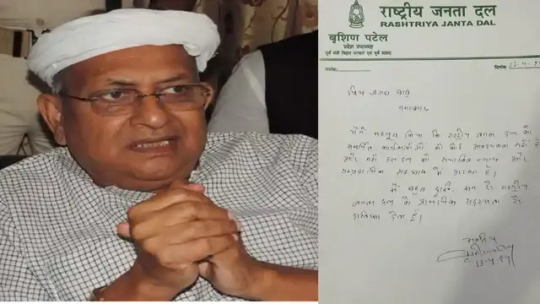
View On WordPress
#BiharNews#left the party#Party&039;s state vice president and former MP Vrushin Patel#Rashtriya Janata Dal (RJD)#suffered another setback in Bihar
0 notes
Text
Anantkumar Hegde: A Champion of Progress and Development
In a political landscape often fraught with challenges and controversies, Anantkumar Hegde, the esteemed Member of Parliament (MP) representing the Bharatiya Janata Party (BJP), stands out as a beacon of hope and progress. With his unwavering commitment to the welfare of his constituents and the nation at large, Hegde continues to make significant strides in fostering development and positive change.

In a recent development, Hegde has unveiled a transformative vision for the development of Uttara Kannada, his constituency in Karnataka. Through a comprehensive document titled “Vikasa Patha” (Path of Development), Hegde lays out a blueprint for holistic progress, encompassing various sectors crucial for the region’s prosperity.
At the heart of Hegde’s vision lies a focus on infrastructure and connectivity. Recognizing the pivotal role of robust infrastructure in driving economic growth and improving living standards, Hegde has proposed ambitious projects aimed at enhancing road, rail, and air connectivity in Uttara Kannada. From the expansion of highways to the modernization of railway networks and the establishment of new airports, these initiatives hold the promise of unlocking the region’s full potential and fostering greater integration with the rest of the country.
Moreover, Hegde’s vision extends beyond physical infrastructure to encompass social and economic development. In “Vikasa Patha,” he outlines strategies for promoting entrepreneurship, skill development, and employment generation, thereby empowering the youth and fostering economic resilience in the region. Through targeted interventions in sectors such as agriculture, tourism, and small-scale industries, Hegde aims to create a conducive environment for sustainable growth and prosperity.
One of the highlights of Anantkumar Hegde’s. development agenda is his emphasis on environmental conservation and sustainable resource management. Recognizing the rich ecological diversity of Uttara Kannada and the imperative of preserving it for future generations, Hegde has proposed measures for afforestation, biodiversity conservation, and water resource management. By prioritizing environmental sustainability, he underscores his commitment to ensuring a harmonious balance between development and conservation.
Furthermore, Hegde’s vision for Uttara Kannada encompasses social welfare and inclusive development. From initiatives aimed at improving healthcare infrastructure to schemes for enhancing educational opportunities and empowering marginalized communities, his agenda reflects a deep-seated concern for the well-being of all constituents. Through targeted interventions and partnerships with civil society organizations and grassroots institutions, Hegde seeks to address the socio-economic disparities prevalent in the region and foster social cohesion and inclusivity.
In addition to his vision for Uttara Kannada, Anantkumar Hegde continues to be a vocal advocate for national development and progress. As a member of various parliamentary committees and forums, he actively participates in policy formulation and advocacy initiatives aimed at addressing key national priorities, ranging from infrastructure development to economic reforms and national security.
In conclusion, Anantkumar Hegde’s “Vikasa Patha” epitomizes his unwavering commitment to progress and development. Through his visionary leadership and proactive approach, he continues to inspire hope and confidence among the people of Uttara Kannada and beyond. As India marches towards a brighter future, leaders like Anantkumar Hegde serve as catalysts for positive change, driving the nation towards greater heights of prosperity and well-being.
0 notes
Text
यह चुनाव यह तय करेगा कि माफिया का राज होगा या, कानून का: आदित्यनाथ
बदायूं क्लब में भारतीय जनता पार्टी द्वारा प्रबुद्ध वर्ग सम्मेलन आयोजित किया गया, जिसको उत्तर प्रदेश के मुख्यमंत्री आदित्यनाथ योगी ने संबोधित किया। बदायूं लोकसभा क्षेत्र के प्रबुद्ध वर्ग को संबोधित करते हुये मुख्यमंत्री ने कहा कि आज हम सब यहां पर नए भारत के नए उत्तर प्रदेश के बदायूं में 2024 के लोकसभा चुनाव की तैयारी की दृष्टि से आए हैं। उन्होंने बदायूं लोकसभा क्षेत्र से भाजपा प्रत्याशी दुर्विजय…

View On WordPress
0 notes
Text
Who is muktar ansari ? why was Mukhtar Ansari jailed?
Mukhtar Ansari, a significant figure in Indian politics, was born on June 30, 1963, in Mau, Uttar Pradesh. Coming from a family deeply entrenched in politics and crime, Ansari’s journey was marked by a blend of power and controversy.
Ansari’s foray into politics began in the late 1980s when he joined the Bahujan Samaj Party (BSP), quickly rising through the ranks despite facing allegations of…

View On WordPress
#Bahujan Samaj Party#Bharatiya Janata Party#Controversy#Conviction#Crime#Mukhtar Ansari#Politics#Samajwadi Party#Sentencing#Uttar Pradesh
0 notes
Text
#labour reforms#Modi#third term#poverty#economic development#minimum wage#India#labour force#parliament#general elections#Bharatiya Janata Party#opposition alliance#world's third-largest economy#labour codes#worker unions#hiring#firing provisions#trade unions#social security#Gopal Krishna Agarwal#continuous reforms#economic power#global leadership#Harbhajan Singh#Hind Mazdoor Sabha#anti-labour policies#nationwide protests#farmers#agricultural markets#bilateral trade deals.
0 notes